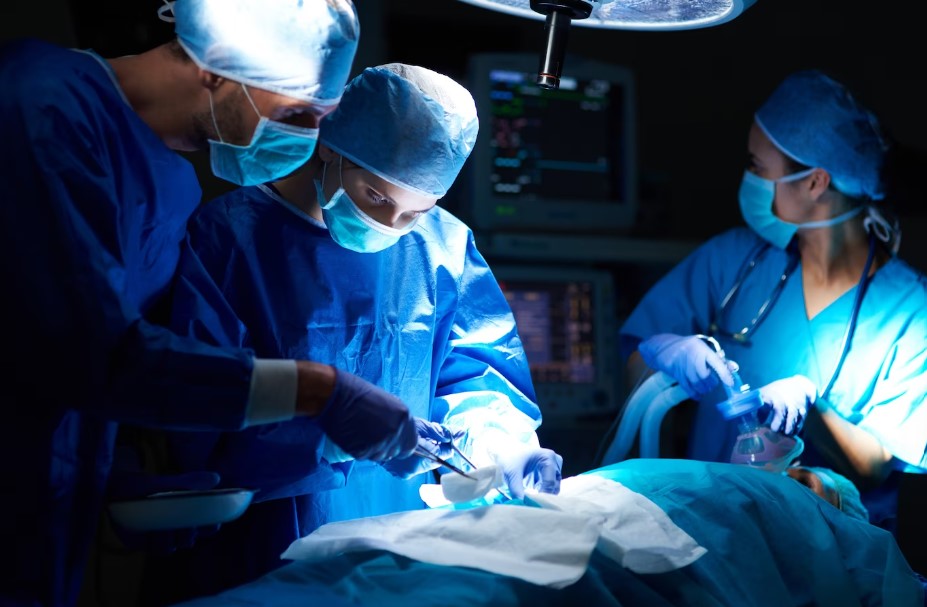A laparoscopy or a laparoscopic surgery is a surgical procedure that allows surgeons to explore and treat the organs of the body through keyhole incisions. It is often termed keyhole surgery which uses specialized tools to operate the internal organ of the abdomen or pelvis. Laparoscopic surgery is performed using a small thin flexible tube called a laparoscope, which is equipped with a camera and a light source. This tube is inserted inside the abdomen of an individual that involves small cuts or incisions.
Surgeons execute a laparoscopic surgery by following a standard set of protocols. A summary of the normal procedure is given below:
- Anaesthesia: A surgeon performs laparoscopic surgery by placing the patient under general anaesthesia to ensure that they are unconscious and pain-free during the surgery.
- Incision Procedure: A small cut or incision of 0.5 to 1 cm is made in the abdomen so that the laparoscope can find a way to enter the organ along with other essential equipment.
- Insertion of laparoscope: The next process involves the insertion of a laparoscope tube that helps the surgeon identify and treat the cause.
- Expansion of the abdomen: During this process, carbon dioxide is gently injected into the abdominal part. This helps the surgeon to get a clear visual of the organs to move the equipment or surgical instruments.
- Adding surgical instruments: Right after the expansion of the abdomen, surgical equipment such as graspers, scissors, cameras, light sources, cautery devices and other tools are inserted through the incisions.
- Surgical procedure and execution: The procedure for surgery begins after performing the above-mentioned steps. The surgeon performs the necessary procedures that are required by the body to get treated. This process includes removing tissues, treating organs, addressing abnormalities, and taking biopsies.
- Closure: After performing the surgical procedure, the instruments are removed, and if there are any major cuts or bleeding, it is controlled. The carbon dioxide added is released and the incisions are closed with surgical tapes or sutures.
While most surgeons adopt such methods and techniques, the procedure may vary from surgeon to surgeon. The procedure depends on the patient’s condition, and hence the surgeon decided the appropriate method for the treatment.
It is important to note that the decision to undergo laparoscopic surgery involves factors such as the patient’s health, specific condition and the surgeon’s expertise. Until and unless people don’t consult a doctor, they aren’t aware of the surgery required or not.
The situations to consider laparoscopy are-
1. Diagnostic Purposes: A surgeon can use the laparoscopic technique to explore diagnostic problems when there is any uncertainty in the medical conditions. The laparoscopy technique can help the surgeon to visualize the internal organs, tissues and abnormalities.
2. Gallbladder Issues: Gallstones and inflammation can be treated using laparoscopic surgery methods. Therefore, the gallbladder is removed through small incisions which results in less pain compared to the traditional surgical procedure.
3. Gynaecological Conditions: Laparoscopic surgery can be used for procedures such as hysterectomy, myomectomy (removal of uterine fibroids), treatment of endometriosis, ovarian cyst removal, and tubal ligation.
4. Appendicitis: Appendicitis can be treated using laparoscopy. This process involves the removal of an inflamed appendix through small incisions.
5. Hernia Repair: Laparoscopic techniques can be used to repair hernias, such as inguinal and ventral hernias. Such techniques are used to avoid the risk of major complications and quick recovery.
Benefits of Laparoscopic Surgery
- Smaller Incisions: One of the primary benefits of laparoscopic surgery is the use of small incisions.
- Reduced Blood Loss: Laparoscopic procedures often involve a lower risk of blood loss compared to open surgery.
- Faster Recovery Time: With smaller incisions and reduced trauma to the body.
- Less Pain and Discomfort: Laparoscopic surgery is associated with smaller incisions and less tissue stress, which leads to less pain and discomfort.
- Lower Risk of Infections: The risk of surgical site infections is much lower with laparoscopic surgery.
- Smaller incisions utilised during laparoscopic surgery result in less scarring and better cosmetic results.
- Quicker Return to Regular Activities: Laparoscopic surgery allows patients to return to their regular activities more quickly.
- Reduced Complication Risk: Laparoscopic cameras allows precise visualization and magnification. This enables surgeons to carry out treatments with more accuracy and control.










